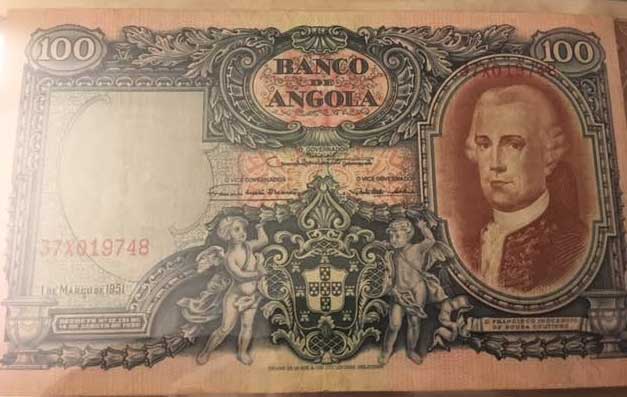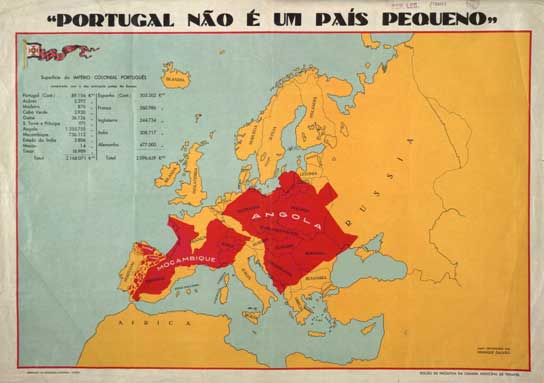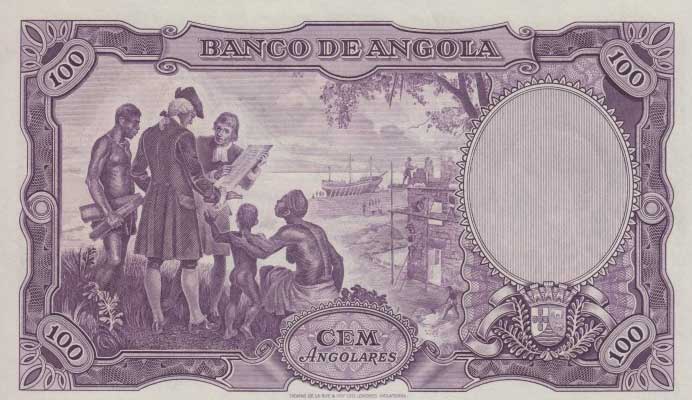The Dilemma of Colonialism in Portuguese Angola

One of the countries that I collect more thoroughly is Angola. This is due not only to the design of the banknotes but also because of my Portuguese identity. If you look into the banknotes that Angola has nowadays, they are far from beautiful and have had the same design for the last 30 years. Fortunately, and although the value of the modern currency has not improved much, the designs of Angola under Portuguese rule were a bit better in their design. One of the most beautiful notes of my collection is Angolas 100 Angolares from 1951 (p85). Before we go into the details of the design, I'd like to mention that unfortunately the photo of my banknote is not the best and I only have it in VF condition, but lets discuss the colonial policy of Portugal in the 50's first.

At a time when all of Europe was facing de-colonization (mostly French Africa where some colonies were already independent) Portugal, a poor dictatorial regime far from the center of Europe was still considering all its African "possessions" as mere provinces of the whole country. Actually propaganda from back then was making us believe that the country was far bigger than it really was and from the picture below you can clearly see how ridiculous and preposterous most of it was. The map below is titled “Portugal Is Not A Small Country” and tries to argue that the whole territory of the empire would be bigger than Spain, France, the United Kingdom, Italy and Germany combined.

But not all of the regime was oblivious to the changes and the banknote is actually a good example of this slight change of policy. If in the past banknotes from Portuguese colonies would picture conquerors and animals, this series (1951) tries to include some characters in them. In the case of Angola p85 we have D. Francisco Inocêncio de Sousa Coutinho, which was governor of the Angolan Portuguese possessions from 1762 to 1772. This aristocrat was one of the first governors that tried to develop the provinces into something more than simply lands for the extraction of minerals and the slave trade. He was also one of the first men to expose the deplorable conditions of the black community in Angola, who were basically slaves of Portuguese settlers, with no basic rights in territories where war between tribes and harsh conditions were the norm.
Nevertheless this was still just a hidden colonialism tactic and if you see the symbols on the banknote as well as the back, you can clearly see what the regime still thought about the colony. On the front center part of this banknote you still find the coat of arms of the Kingdom of Portugal during the golden XVI century and in the back an image of an aristocrat with some maps talking with another aristocrat while the black population is depicted naked either looking in wonder at the Portuguese, and used to carry maps around and working on a fortification.

The situation got a bit better in the following decades with the Portuguese population also questioning their presence in Africa, which back in the beginning of the 70's was consuming a large portion of the countries resources for a war on 3 different fronts as the only European country still with large possessions in Africa. With the 25th April 1974 revolution, which ended the longest dictatorship in Europe, one of the first priorities was to give independence to all remaining African colonies that belonged to Portual. This process was far from perfect but better than many expected.





